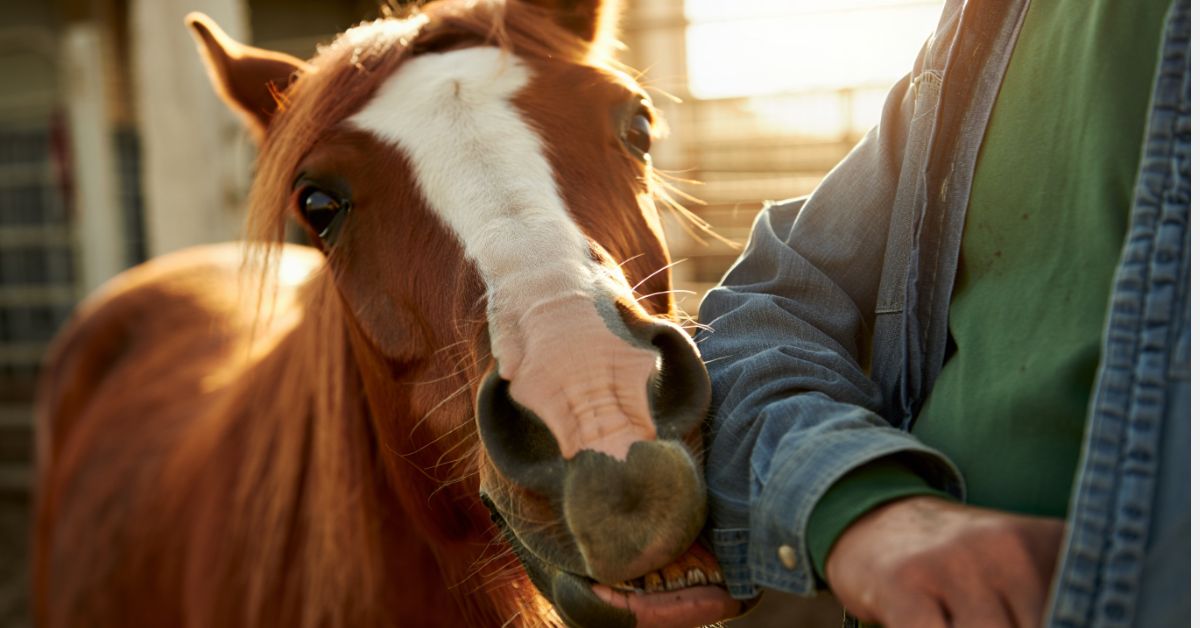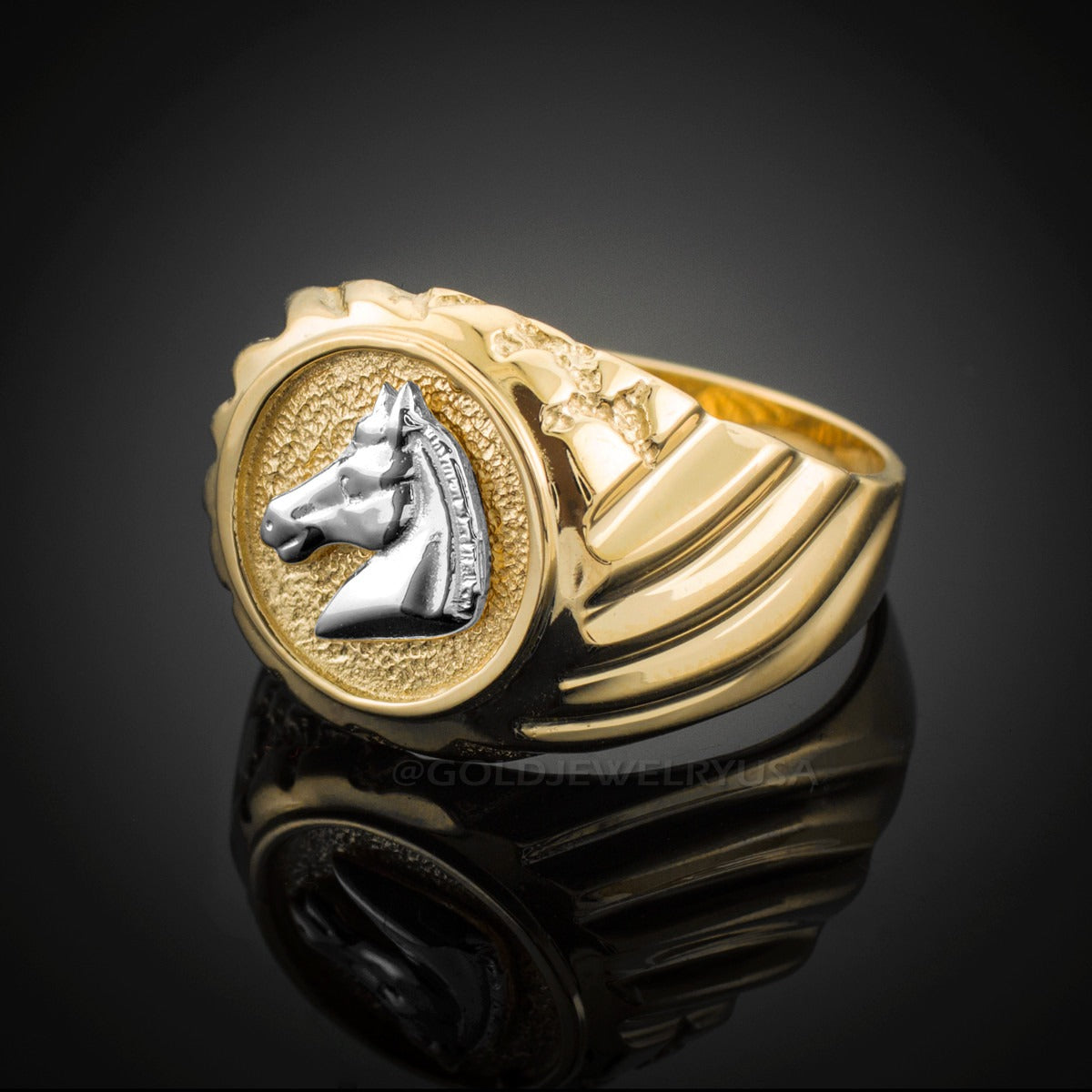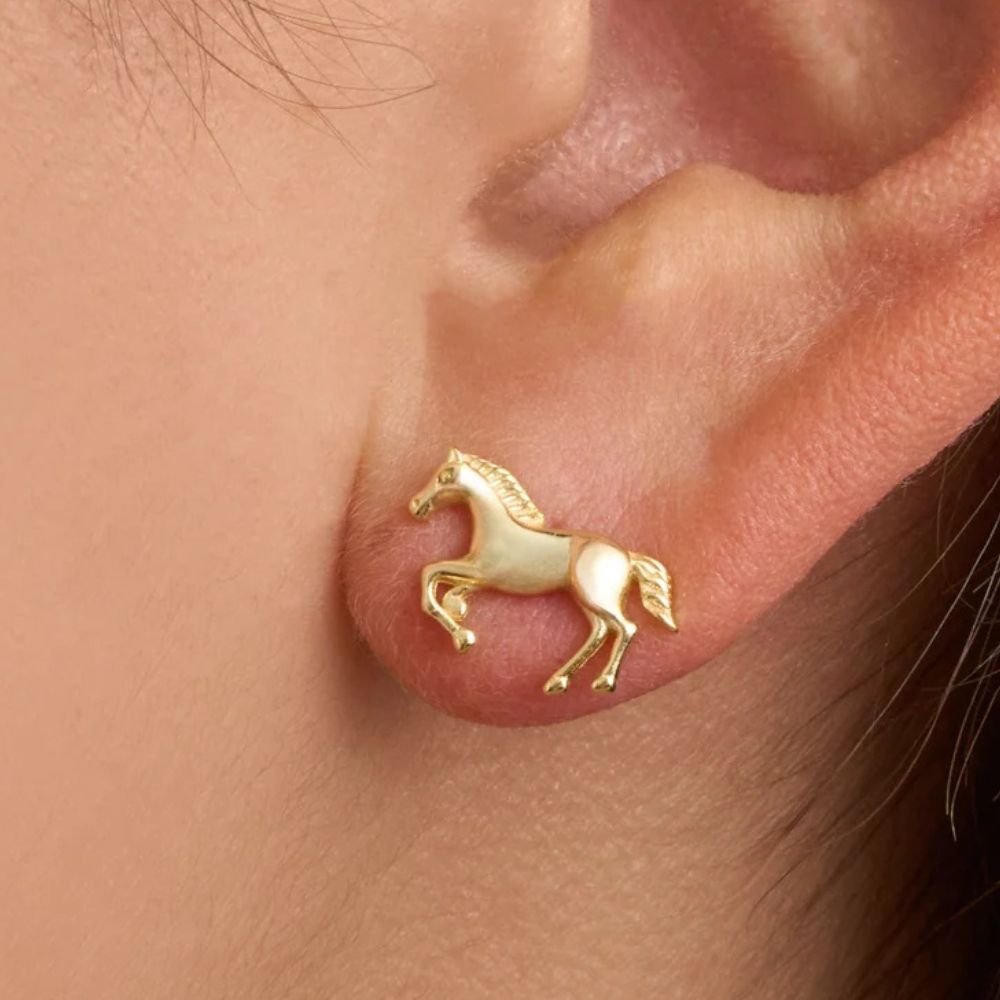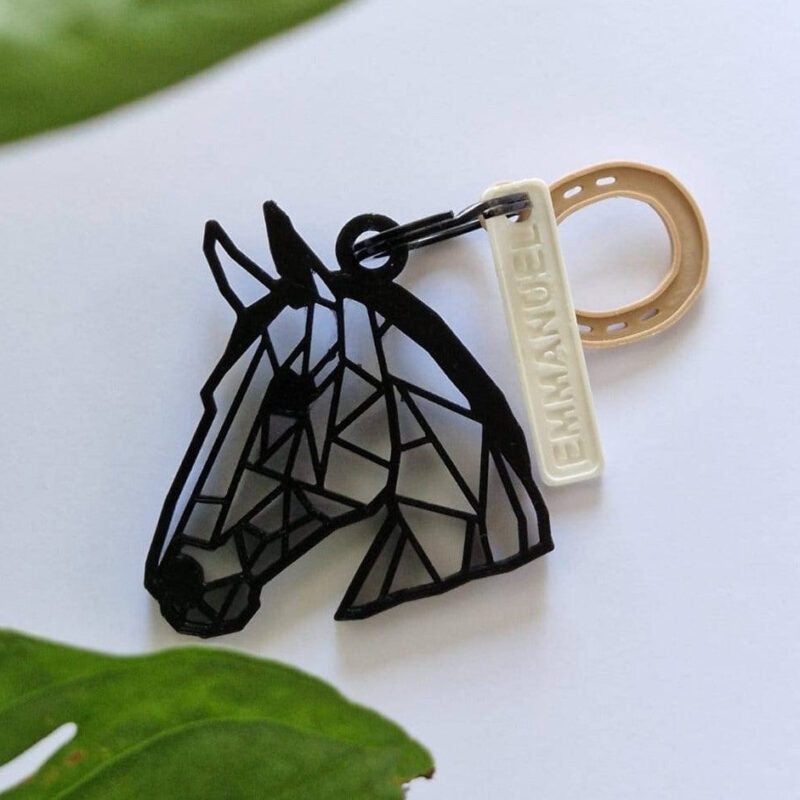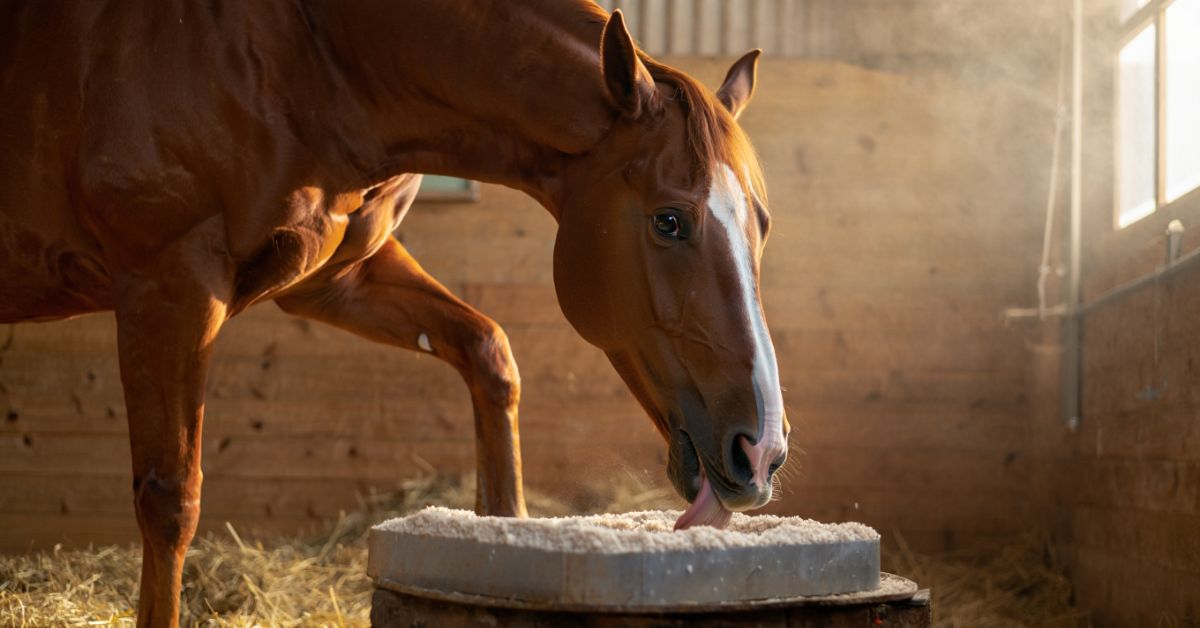
Why Do Horses Need Salt Blocks? Essential Guide to Equine Mineral Health
Ever watched your horse enthusiastically licking their salt block and wondered what's driving that behavior? You're witnessing one of nature's most fascinating survival instincts. Why do horses need salt blocks? Simply put, horses require sodium chloride to maintain vital body functions, replace electrolyte losses from sweat, and support everything from nerve impulse transmission to muscle function. Without adequate salt intake, your equine companion faces serious health risks including dehydration, poor performance, and electrolyte depletion.
Salt blocks aren't just a stable accessory—they're essential for your horse's equine health and well-being. Whether your horse is a weekend trail companion or a competitive athlete engaged in a heavy work regimen, understanding their mineral requirements can mean the difference between optimal performance and health complications. Let's dive deep into the science behind equine nutrition and discover why that humble block of salt deserves a prominent place in your barn. 🧂
Chapter 1: The Science Behind Equine Salt Requirements
Understanding Sodium Chloride and Electrolyte Balance
Here's something that might surprise you: horses are one of the few mammals that lose significant amounts of sodium through sweat loss. While humans sweat primarily water, horses lose substantial electrolytes with every drop of perspiration. This makes daily salt intake absolutely critical for maintaining proper electrolyte balance.
Sodium chloride—common table salt—consists of two essential elements that work like a perfectly choreographed dance in your horse's body. Sodium regulates fluid balance, supports nerve impulse transmission, and maintains blood pressure. Chloride aids digestion by producing stomach acid and helps transport nutrients throughout the body. Together, they're the dynamic duo of equine nutrition.
Think of electrolytes as your horse's internal battery system. When these minerals fall out of balance through sweating rate and exertion, everything from muscle function to digestive health suffers. A horse working moderately can lose 30-40 grams of sodium daily just through normal sweat loss—that's roughly 75-100 grams of salt! In hot weather management or during a heavy work regimen, those numbers skyrocket even higher.
The Role of Minerals in Athletic Performance
Professional equestrians have known for decades what science continues to confirm: mineral bioavailability directly impacts athletic performance. A 2019 study published in the Journal of Equine Veterinary Science found that horses with optimized electrolyte levels showed 15-20% improvement in endurance capabilities compared to those with sodium deficiency.
Potassium, calcium and phosphorus work alongside sodium chloride to power muscle contractions, bone strength, and energy metabolism. However, sodium is unique because horses lose it faster than any other mineral. Without adequate replacement through salt blocks or loose salt, your horse's body starts pulling sodium from vital tissues—compromising everything from heart rhythm to metabolic processes.
Consider this real-world example: A 1,000-pound horse in moderate work requires approximately 2-3 ounces of salt daily. That's about 60-90 grams. If your horse sweats heavily during summer training, that requirement doubles or even triples. Missing even a few days of adequate salt intake creates a cascade of problems affecting equine health and performance.
Free-Choice Minerals: Nature's Wisdom
Here's where things get fascinating—horses possess an innate ability to self-regulate their mineral requirements through something called salt cravings. When you provide free-choice minerals via salt blocks or loose salt, horses instinctively consume what their bodies need. This licking behavior isn't random; it's evolutionary intelligence at work.
"The horse has evolved sophisticated regulatory mechanisms for sodium homeostasis that allow it to thrive in diverse environments," notes Dr. Sarah Ralston, equine nutritionist and professor at Rutgers University. This self-regulation makes salt block placement one of the simplest yet most effective management practices in equine management.
Iodized salt blocks offer an added advantage—they prevent iodine deficiency, which can affect thyroid function and reproduction. Many experienced horse owners keep both plain salt blocks and trace minerals blocks available, allowing horses to choose based on their body's needs. This approach respects the horse's natural palatability preferences while ensuring comprehensive mineral supplements availability.
Chapter 2: Why Do Horses Need Salt Blocks—The Essential Functions Explained
Dehydration Prevention and Water Consumption
Let's talk about one of salt's most critical jobs: driving your horse's thirst. The relationship between salt intake and water consumption is so interconnected that one cannot function without the other. Sodium chloride creates osmotic pressure that literally triggers your horse's thirst response, encouraging them to drink adequate water.
Here's a surprising statistic: horses with unlimited access to salt blocks drink 20-40% more water than those without. This increased water consumption is crucial for dehydration prevention, especially during summer months or intense training. A properly hydrated horse has better digestive health, improved joint lubrication, and enhanced temperature regulation—all thanks to adequate salt intake stimulating proper drinking behavior.
Imagine your horse's body as a complex irrigation system. Sodium acts as the flow regulator, ensuring water reaches every cell. Without sufficient electrolyte balance, this system fails. Dehydration sets in rapidly, particularly in horses engaged in heavy work regimen activities. The symptoms? Reduced performance, elevated heart rate, dark urine, and in severe cases, hyponatremia—a dangerous condition where blood sodium levels drop critically low.
Muscle Function and Nerve Impulse Transmission
Every movement your horse makes—from a gentle walk to a powerful jump—depends on sodium and chloride working together for proper muscle function. These electrolytes generate electrical charges that allow muscles to contract and relax smoothly. Without adequate daily salt intake, horses experience muscle cramping, stiffness, and decreased coordination.
Nerve impulse transmission operates on the same electrical principle. Sodium rushes into nerve cells, creating action potentials that send messages throughout your horse's body. Whether coordinating a graceful dressage movement or simply processing what's happening in their environment, your horse's nervous system relies completely on proper electrolyte balance.
In practical terms, a horse experiencing sodium deficiency might display:
-
Muscle tremors or twitching
-
Reduced stamina and early fatigue
-
Poor coordination or stumbling
-
Behavioral changes or irritability
-
Decreased appetite
These symptoms often appear gradually, making it easy to miss the connection to inadequate salt intake. By the time licking behavior becomes frantic—your horse desperately seeking salt—they've already been deficient for days or weeks.
Digestive Health and Metabolic Processes
Your horse's digestive health depends on chloride to produce hydrochloric acid in the stomach. This acid breaks down feed, activates digestive enzymes, and prevents harmful bacteria from colonizing the gut. Insufficient chloride compromises digestion, leading to colic risk, poor nutrient absorption, and weight loss despite adequate feeding.
Metabolic processes throughout the body—from energy production to waste elimination—require precise electrolyte concentrations. Think of sodium and chloride as the conductors of a symphony orchestra, ensuring every biological instrument plays in perfect harmony. When mineral bioavailability suffers, the entire metabolic symphony falls out of tune, affecting equine health from cellular respiration to immune function.
Recent research from the University of Kentucky's Gluck Equine Research Center (2022) demonstrated that horses with optimized mineral requirements showed 25% better feed efficiency compared to those experiencing even mild electrolyte depletion. This means your salt block investment literally translates to better utilization of your hay and grain—saving money while improving equine nutrition.
Chapter 3: Choosing Between Salt Blocks, Loose Salt, and Mineral Supplements
The Great Debate: Salt Block vs. Loose Salt
Walk into any tack shop and you'll face the age-old question: salt block or loose salt? Both have passionate advocates, and honestly, each offers distinct advantages for equine management. Understanding your horse's needs, environment, and work schedule helps you make the perfect choice.
Salt blocks provide slow, steady access to sodium chloride. They're weather-resistant, long-lasting, and encourage natural licking behavior. However, some horses struggle to consume adequate amounts through licking alone, especially older horses with dental issues or those with extremely high mineral requirements due to heavy work regimen. A standard 50-pound salt block typically lasts 2-4 months depending on the number of horses and their salt cravings.
Loose salt, on the other hand, allows horses to consume larger quantities quickly. It's particularly beneficial during hot weather management when sweat loss skyrockets. Many professional trainers top-dress grain with 1-2 tablespoons of loose salt daily, ensuring minimum daily salt intake regardless of licking behavior. The downside? Weather affects it, requiring covered salt feeder placement and more frequent replacement.
Here's a pro tip from seasoned horse enthusiasts: offer both! Keep a salt block available 24/7 for baseline needs, and supplement with loose salt during intense work or heat. This dual approach respects your horse's palatability preferences while guaranteeing adequate mineral supplements.
Understanding Iodized Salt Blocks and Trace Minerals
Not all salt blocks are created equal. Iodized salt blocks contain added iodine, essential for thyroid function, metabolism regulation, and reproductive health. Iodine deficiency, while rare, can cause goiter, poor coat quality, and fertility issues. For most horses, iodized salt blocks provide excellent baseline coverage for mineral requirements.
Trace minerals blocks take things further, adding selenium, zinc, copper, manganese, and other micronutrients alongside sodium chloride. These specialty blocks address broader equine nutrition needs, particularly in regions with mineral-deficient soils. A 2021 survey by the American Association of Equine Practitioners found that 68% of veterinarians recommend trace minerals blocks for horses not receiving balanced commercial feeds.
However, here's where veterinary advice becomes crucial: over-supplementation can be as problematic as deficiency. Selenium toxicity, for instance, occurs when horses consume excessive amounts from multiple sources—trace minerals blocks plus selenium-fortified feed plus mineral-rich forage. Balance is everything in equine nutrition, making forage analysis and professional guidance invaluable.
Proper Salt Feeder Placement and Accessibility
Location matters more than most people realize. Strategic salt feeder placement dramatically affects consumption rates and overall equine health. Mount salt blocks at chest height—approximately 3-4 feet off the ground for average horses. This comfortable height encourages regular use and prevents your horse from ingesting dirt or debris mixed with fallen salt.
Keep salt stations away from automatic waterers or drinking areas. While salt intake drives thirst, immediate proximity to water can create muddy messes and reduce consumption. Instead, position salt blocks in high-traffic areas where horses naturally gather—near gates, favorite shade trees, or along fence lines connecting pastures.
For multiple horses, provide enough stations to prevent bullying. Dominant herd members sometimes guard resources, preventing subordinate horses from accessing free-choice minerals. A good rule: one salt block per 2-3 horses in group settings. This ensures every horse can meet their mineral requirements without competition stress.
Weather protection extends salt block life and maintains palatability. Simple roof overhangs or three-sided shelters shield salt from rain while providing year-round access. During winter, salt blocks become rock-hard, making consumption difficult. Warming them slightly with safe heating methods or switching to loose salt in cold months helps maintain consistent daily salt intake.
Chapter 4: Hot Weather Management, Work Intensity, and Increased Salt Requirements
Calculating Your Horse's Daily Salt Intake Needs
Mathematics meets equine management—let's crunch some numbers! Understanding your horse's specific salt requirements transforms abstract recommendations into actionable feeding plans. Here's the formula veterinarians use to determine baseline needs:
Basic maintenance requirement = 0.5-1.0 ounces of salt per 1,000 pounds body weight daily
For a typical 1,000-pound horse at rest, that's approximately 15-30 grams (1-2 tablespoons) of sodium chloride daily. However, real life rarely involves horses at complete rest. Activity level, climate, and individual sweating rate dramatically alter these baseline calculations.
Let's work through practical examples:
Light work (trail riding 2-3 times weekly):
-
Base requirement: 30 grams
-
Work addition: +15 grams
-
Total daily salt intake: 45 grams (approximately 3 tablespoons)
Moderate work (training 5 days weekly, 1 hour sessions):
-
Base requirement: 30 grams
-
Work addition: +30 grams
-
Heat factor (summer): +20 grams
-
Total daily salt intake: 80 grams (approximately 5-6 tablespoons)
Heavy work regimen (competition, intense training):
-
Base requirement: 30 grams
-
Work addition: +60 grams
-
Sweat loss factor: +40 grams
-
Total daily salt intake: 130 grams (approximately 8-9 tablespoons)
These calculations explain why free-choice minerals access is so critical—individual variation makes one-size-fits-all recommendations impossible. Your horse knows their body's needs better than any formula.
Sweat Loss and Electrolyte Depletion in Working Horses
Here's an eye-opening fact: horses produce up to 10-15 liters of sweat during intense exercise. That sweat contains approximately 3.5 grams of sodium per liter—meaning a hard-working horse can lose 35-50 grams of sodium in a single training session! This massive electrolyte depletion explains why athletic performance deteriorates rapidly without proper replacement.
Unlike human sweat (hypotonic), horse sweat is hypertonic—meaning it's more concentrated in electrolytes than blood plasma. This evolutionary quirk makes horses exceptionally efficient at cooling through evaporation but vulnerable to rapid mineral loss. You can actually taste the difference—horse sweat tastes distinctly salty due to its high sodium chloride content.
Recognizing electrolyte depletion symptoms saves lives. Watch for:
-
Thick, paste-like sweat that doesn't evaporate
-
Skin tenting (pinch test showing delayed elasticity)
-
Elevated heart rate that won't recover
-
Reluctance to drink despite obvious thirst
-
Depression or unusual quiet behavior
-
Dark, concentrated urine
Professional riders competing in endurance events, eventing, or summer show circuits become experts at managing electrolyte balance. Many administer electrolyte pastes before, during, and after competition, supplementing salt blocks with targeted mineral supplements matched to their horse's sweating rate and metabolic processes.
Summer Strategies for Hot Weather Management
When temperatures soar, salt requirements skyrocket. A horse comfortable in spring with standard salt block access might need triple that amount during July heat waves. Progressive equine management adapts salt provision to seasonal demands, preventing dehydration before it compromises equine health.
Temperature above 80°F combined with humidity above 50% creates significant heat stress. Under these conditions, implement aggressive salt supplementation:
Morning feeding: Add 2 tablespoons loose salt to grain Throughout day: Ensure fresh salt blocks in shaded areas
Evening feeding: Additional 1-2 tablespoons loose salt Always available: Fresh, cool water in multiple locations
Some clever horse enthusiasts create "salt slushies" by dissolving loose salt in water with a splash of apple juice for palatability. These homemade electrolyte drinks boost both salt intake and water consumption—a double win for dehydration prevention. Just remember: never force salt consumption by restricting water. The thirst drive mechanism requires both elements working in harmony.
Pasture horses face unique summer challenges. Natural shade is hot; horses need structural shade that actually cools. Position salt blocks in these cooler areas, encouraging horses to move from sun to shade regularly. This behavior pattern—grazing, moving to shade, drinking, licking salt—creates healthy hydration cycles throughout daylight hours.
Recognizing and Preventing Salt Toxicity
Balance is everything. While sodium deficiency causes problems, excessive salt consumption—though rare—presents serious dangers. Salt toxicity occurs when horses suddenly access large quantities after prolonged restriction or when water availability is limited during high salt intake.
The dangerous scenario: A horse deprived of salt for weeks gorges on a newly provided salt block, consuming 5-10 pounds rapidly. Without adequate water to process this sodium load, brain swelling and neurological damage occur. Symptoms include aimless wandering, pressing head against walls, seizures, and potentially death. This underscores why consistent free-choice minerals access matters—horses with regular availability self-regulate beautifully.
Prevention is straightforward:
-
Never suddenly introduce salt after prolonged deprivation
-
Always ensure unlimited fresh water before providing salt
-
Gradually introduce salt blocks over 3-5 days for new horses
-
Monitor consumption patterns, noting unusual licking behavior
Veterinarians consider salt toxicity an equine management failure rather than a feeding problem. With proper practices, it's entirely preventable. The recommended maximum safe intake is approximately 3 grams per kilogram body weight—roughly 1,500 grams for a 1,000-pound horse. Normal licking behavior never approaches these dangerous levels.
Chapter 5: Veterinary Advice, Monitoring, and Optimizing Your Horse's Mineral Requirements
Forage Analysis and Understanding Your Base Equine Diet
Smart equine nutrition starts with knowing what your horse already receives through their forage. Hay and pasture provide baseline minerals, but amounts vary dramatically based on soil composition, grass species, cutting time, and storage methods. Professional forage analysis reveals exactly what your hay delivers—and what it's missing.
A typical forage analysis costs $35-50 and provides invaluable data on sodium, potassium, calcium and phosphorus, and other crucial minerals. Most hay contains virtually zero sodium—0.01-0.05% compared to the 0.2-0.3% horses require. This massive gap explains why salt blocks aren't optional extras but absolute necessities for equine health.
Consider this real scenario: A horse owner discovered through forage analysis that their local hay contained excessive potassium (4.5% versus ideal 1-2%). High potassium interferes with sodium retention, dramatically increasing daily salt intake requirements. Armed with this knowledge, they doubled salt provision and solved mysterious performance issues that had stumped them for months.
Monitoring Licking Behavior and Consumption Patterns
Become a detective of licking behavior. Your horse's interaction with their salt block tells a story about their health, workload, and mineral bioavailability. A horse barely touching their block despite summer heat signals problems—dental issues preventing licking, palatability concerns with iodized salt blocks, or underlying illness suppressing appetite.
Conversely, aggressive salt cravings and frantic licking might indicate:
-
Sodium deficiency from inadequate provision
-
Increased needs due to unrecognized workload
-
Electrolyte imbalances from medication
-
Stress-related behavioral issues
Track salt block longevity. A 50-pound block lasting only 2-3 weeks for a single horse suggests either excessive consumption worth investigating or environmental factors (rain exposure, other animals accessing it). Normal consumption for an average horse ranges 2-4 ounces daily, making a large block last 2-4 months.
Many progressive barns photograph salt blocks weekly, creating visual consumption records. This simple practice helps identify seasonal patterns, individual horse variations, and potential health issues before they become emergencies. Combined with training logs and performance notes, consumption tracking becomes a powerful equine management tool.
Integrating Professional Veterinary Advice and Custom Mineral Supplements
"Express your style" in equine nutrition doesn't mean going rogue—it means working with professionals to create customized solutions for your unique horse. Your veterinarian considers breed, age, workload, geographic location, water quality, and individual health history when recommending mineral supplements and salt provision strategies.
Some horses have special circumstances requiring modified approaches:
Senior horses: May struggle consuming hard salt blocks due to dental issues. Loose salt or smaller, softer blocks work better.
Metabolic disorders (PPAFD, PPID, Cushing's): Require careful electrolyte balance monitoring as these conditions alter mineral requirements and metabolic processes.
Performance horses: Benefit from targeted electrolyte supplementation timed around training and competition, supplementing baseline salt block access.
Pregnant/lactating mares: Need increased minerals for fetal development and milk production, often requiring trace minerals blocks plus additional mineral supplements.
Dr. Kathleen Crandell, equine nutritionist for Kentucky Equine Research, emphasizes personalization: "We've moved beyond generic recommendations to precision nutrition. Forage analysis, individual assessment, and strategic supplementation optimize equine health far better than one-size-fits-all approaches."
The Dream Horse Connection: Supporting Your Horse's Complete Well-Being 🏇
Understanding why do horses need salt blocks connects to everything that makes horse ownership rewarding. When you ensure proper electrolyte balance through quality salt provision, you're giving your horse the foundation for vibrant equine health, optimal athletic performance, and the energy to enjoy every ride together.
At Dream Horse, we celebrate horse enthusiasts who go beyond basic care to truly understand their horses' needs. While we specialize in beautiful equestrian jewelry, elegant decorations, and practical accessories that express your passion for horses, we know these items mean nothing without healthy, happy horses to ride and love. Every necklace, bracelet, and sculpture in our collection honors the deep bond between humans and horses—a relationship built on knowledge, dedication, and genuine care.
Whether you're adding decorative horse sculptures to your barn office or selecting a sterling silver horse pendant, you're asserting your individuality as someone who truly cares about equine management. Express your style while supporting your horse's health—that's the Dream Horse difference. 💎
Frequently Asked Questions on Why Do Horses Need Salt Blocks
How much salt should a horse consume daily?
A typical 1,000-pound horse requires 2-3 ounces (60-90 grams) of salt daily for maintenance, increasing to 4-6 ounces during work or hot weather. Horses self-regulate beautifully when given free-choice minerals access, making salt blocks or loose salt constantly available the best approach. Monitor consumption by tracking how quickly salt blocks deplete—a 50-pound block typically lasts 2-4 months per horse under normal conditions.
What happens if my horse doesn't have access to salt?
Sodium deficiency develops rapidly, causing dehydration, reduced water consumption, muscle cramping, poor performance, and behavioral changes. Within days, electrolyte balance deteriorates, affecting nerve impulse transmission and muscle function. Severe cases can lead to hyponatremia, a life-threatening condition requiring immediate veterinary intervention. Chronic salt deprivation compromises digestive health, metabolic processes, and overall equine health—making salt blocks non-negotiable for responsible equine management.
Should I use plain salt blocks or trace mineral blocks?
Iodized salt blocks work excellently for most horses, providing essential sodium chloride plus iodine for thyroid health. Trace minerals blocks add selenium, copper, zinc, and other micronutrients, benefiting horses not receiving balanced commercial feeds or living in mineral-deficient regions. Many experienced horse owners provide both options, allowing horses to choose based on their mineral requirements. Consult your veterinarian and conduct forage analysis to determine what your specific situation requires for optimal equine nutrition.
Can horses overdose on salt from salt blocks?
Salt toxicity from salt blocks is extremely rare because horses naturally self-regulate licking behavior when given consistent access. Problems occur only when salt-deprived horses suddenly gorge on large quantities or when water availability is restricted during high salt intake. Normal free-choice minerals consumption with unlimited water access is completely safe. If your horse exhibits unusual salt cravings or excessive licking, consult your veterinarian—it might indicate sodium deficiency or other mineral imbalances requiring attention.
Where should I place salt blocks in my horse's environment?
Position salt blocks at chest height (3-4 feet) in high-traffic areas away from water sources to prevent muddy messes. Provide weather protection through roof overhangs or shelters to extend salt block life and maintain palatability. For multiple horses, offer one station per 2-3 horses to prevent resource guarding. Strategic salt feeder placement dramatically affects consumption rates—horses use conveniently located blocks 40-60% more than those in awkward locations, directly impacting daily salt intake and overall equine health.
Do different horse activities change salt needs?
Absolutely! Heavy work regimen horses lose 2-4 times more electrolytes through sweat loss than pastured horses. Competition horses, those in intense training, or animals working in hot weather require significantly increased salt intake—sometimes 6-8 ounces daily versus 2-3 ounces for maintenance. This variability explains why free-choice minerals access outperforms fixed supplementation—horses naturally adjust consumption matching their workload and sweating rate. Monitor licking behavior patterns, noting increased activity during training seasons requiring additional loose salt supplementation.
Salt blocks aren't just another barn supply—they're fundamental to every aspect of equine health, from athletic performance to simple daily comfort. By understanding why do horses need salt blocks and implementing smart equine management practices, you give your horse the foundation for thriving health and the energy to enjoy every adventure together. Whether trail riding through autumn leaves or competing under summer sun, proper electrolyte balance makes everything possible.





